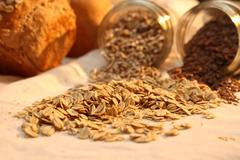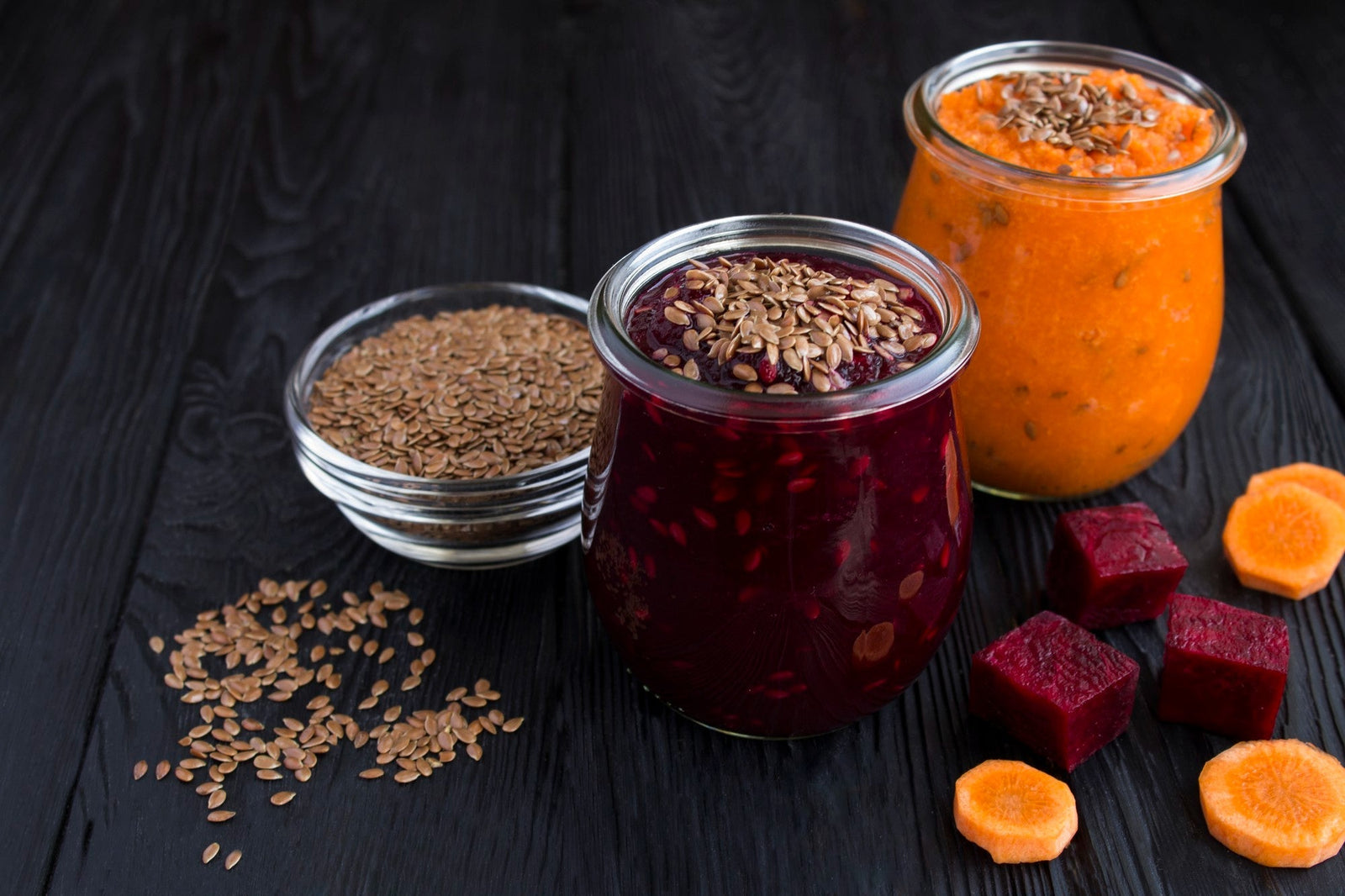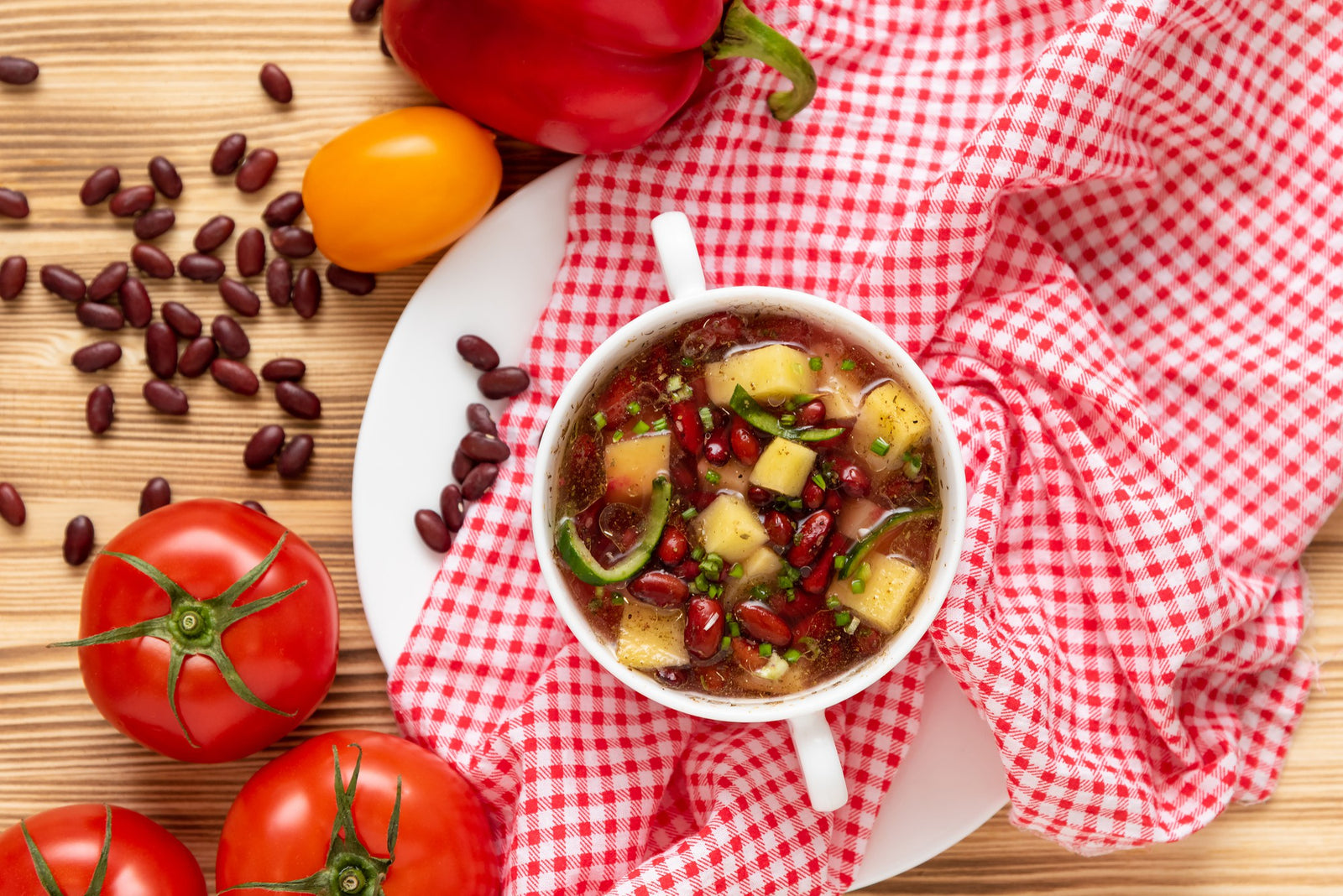
December 06, 2016 2 min read 2 Comments
Grains are one of the most commonly consumed foods worldwide. However, along with the continued and growing popularity of well-known and re-emerging varieties of grains, there has also been a corresponding rise in reports about difficulties in digesting them. Despite the hype about grain sensitivity, for many people, the problem may not lie with the grain itself, but rather in the preparation of the grains.
Despite the hype about grain sensitivity, for many people, the problem may not lie with the grain itself, but rather in the preparation of the grains.
Pre-soaking grains before cooking is one way to assuage problems associated with grain digestion. This step is said to make grains more digestible which allows the body to extract more nutrients. The process of pre-soaking can also help minimize the effects of various anti-nutrients such as phytic acid, which can otherwise inhibit the body's ability to absorb the vitamins and minerals in the grain.
Pre-soaking grains can help address at least the following issues:
Phytates
Grains contain phytates which are antioxidant compounds. The main concern regarding these anti-nutrients is that they bind to specific minerals, like zinc, iron, and manganese which slows absorption. Typically, the bran part of whole grains contains phytic acid, and if consumed excessively can inhibit mineral absorption. Soaking grains before cooking can help neutralize the phytic acid, removing barriers to proper absorption of these minerals.
Difficult proteins and complex starches
Pre-soaking grains also helps break down certain hard-to-digest proteins such as gluten. In addition, certain complex starches and fiber also become easier to digest as they are broken down further by the soaking process. As a result, individuals may notice that many of their gluten sensitivities or allergic reactions may be lessened when grains are soaked prior to cooking.
Enzyme inhibitors
Since grains are seeds, they contain enzyme inhibitors which are good for the grain as they protect the seed from germinating unless conditions are optimal for its growth. However, if these same enzyme inhibitors are ingested by humans, they can inhibit the body’s own enzymes and result in a less efficient digestive process. Instead, when grains are soaked before cooking, enzyme inhibitors are neutralized allowing for better vitamin and mineral assimilation by the body.
What is the best way to soak grains?
Typically grains are soaked in warm water. Based on the type of grain, soaking periods can vary from a couple of hours to soaking overnight. For instance, grains like buckwheat, millet, and brown rice do not have very high amounts of phytate, so they can be soaked for a few hours. Other grains, such as whole wheat, spelt, or oats, should be soaked overnight due to their high phytate content.
For best results, many experts recommend that grains be soaked not only in a warm liquid but also that the liquid is fortified with an acidic medium such as yogurt, lemon juice, whey, kefir, or apple cider vinegar. Adding an acidic medium helps to prevent spoilage from unfriendly bacteria while also facilitating the breakdown of phytic acid.
So go ahead and give it a try! The best way to find out if it helps you is to try pre-soaking some grains for yourself.
Related Blogs:
Thanks for reading this Be Still Farms Blog article. To sign up for more news/articles and/or recipes, click here. For more about us, click here. To shop our certified organic products, click here.
Please comment and share and we look forward to serving you in the future!
January 11, 2017
Any suggestions on grinding the wheat after soaking? How would you make bread from soaking wheat?
Comments will be approved before showing up.

January 27, 2025 3 min read
Flaxseed, the tiny yet powerful superfood, is packed with nutrients that can support weight loss. From curbing hunger to stabilizing blood sugar, this guide dives into the science of how flaxseed can help you shed those extra pounds.

December 11, 2024 3 min read
Discover three quick and easy soup recipes featuring organic small red beans. From a classic vegetable soup to a creamy potato blend, these wholesome recipes are perfect for chilly days and busy weeknights. Packed with flavor and nutrition, these soups will warm your heart and soul this winter!

December 06, 2024 3 min read
This vibrant and nutritious Green Lentil Salad combines tender lentils with grilled chicken, fresh vegetables, and a zesty lemon dressing. Packed with protein, fiber, and essential vitamins, it’s the perfect healthy meal for any time of day.
© 2026 Be Still Farms- Real, Fine Organics.
Privacy | Terms | Refund Policy | Organic Certification

Michelle@BSF
February 17, 2017
Hi Carol, that’s a great question. Probably the easiest and most time-efficient way to soak your wheat- unlike with other grains that you won’t be grinding later- is to do it after grinding. If you soak your wheat prior to grinding, you then need to take the time to make sure it is completely dry before putting it through your grinder. I think you will find it a lot easier to soak your wheat once you have ground it into flour.
For bread, quick bread, and pancake/waffle recipes I would suggest combining your freshly ground flour with the liquid (warmed), sweetener and oil called for in your recipe. Add to this mixture 1 tablespoon of an acid, such as apple cider vinegar, lemon juice or whey, for every cup of liquid used. Cover bowl and leave out for 12-24 hours. When you’re ready to bake, add remaining ingredients and bake as you would normally. Hope this helps!